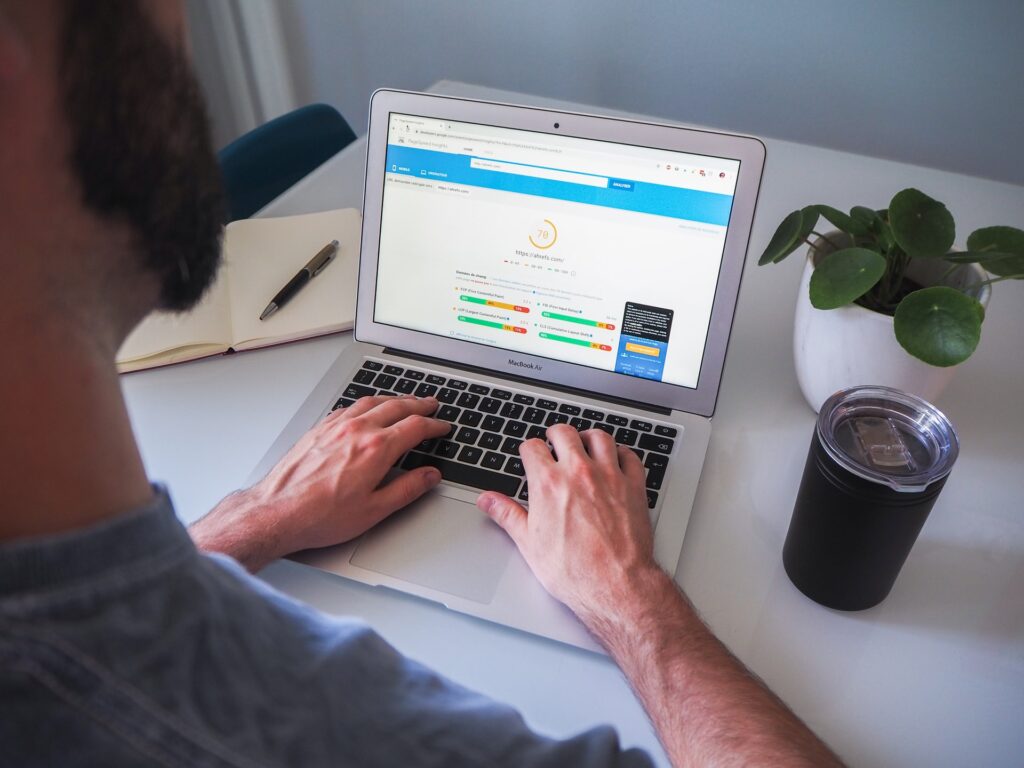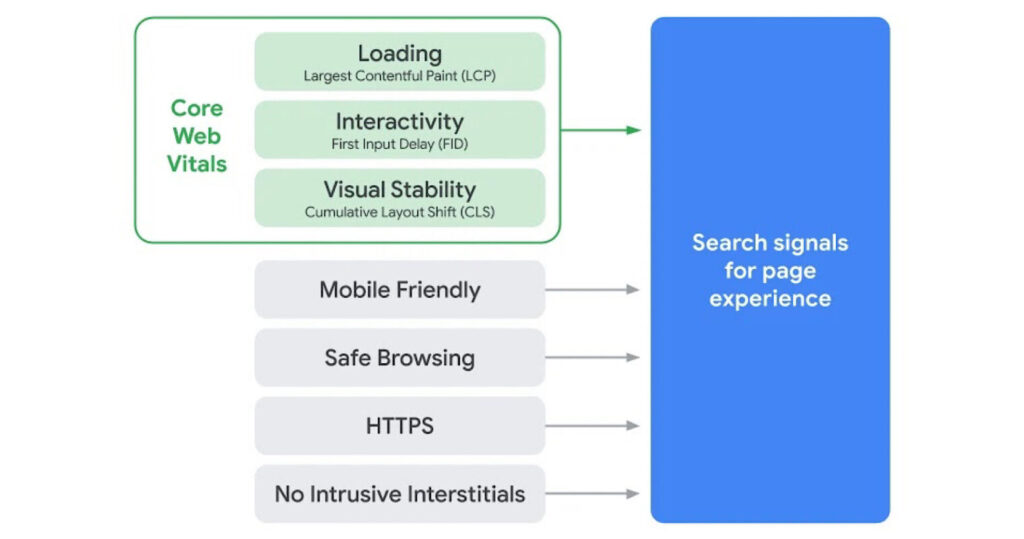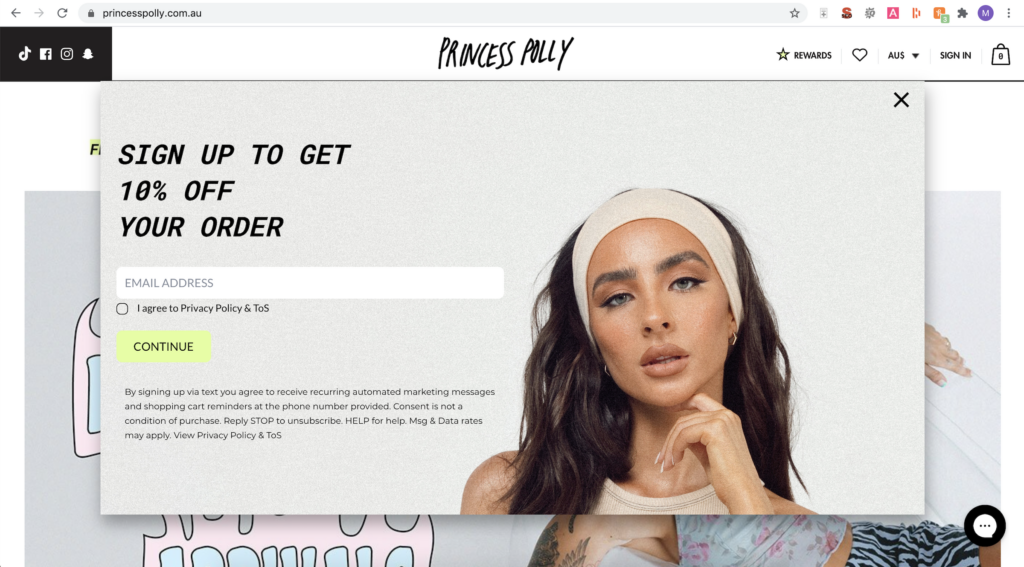Core algorithm changes from Google, Facebook and other key marketing platforms can be bad for your rankings, visibility and traffic if you’re not prepared for them.
And after the year we’ve had, it could well be that you’re less than prepared.
But Google doesn’t stop changing – and their page experience update is rolling out in May 2021.
Unfortunately, this algorithm change could dump your SEO rankings in the soup – because it includes some key changes that need planning and time to respond to.
With May only weeks away (scary, isn’t it?) – it’s time to do a health check on your readiness to ride this wave.
How to prepare your website for Google’s page experience update
The key changes requiring preparation are all things that have probably been on your “We should get around to that” list for a while anyway.
They’re things like:
- Making your website more mobile-friendly – especially making the mobile experience faster.
- Making sure your website is secure for your visitors – especially if one of the items on your to-do list includes the detailed, time-consuming shift from http:// to https://
- Fixing broken links and pages.
- Making your pop-ups intelligent, appropriate and non-irritating (especially on mobile).
These are all sound website housekeeping practices. Ideally you’d do them anyway – like your housekeeping.
Think of it as updating your office premises and getting your customer-facing areas looking like they belong in 2021.
You may already know what’s needed
If you’re a MSD client and we’ve been “suggesting” for a while that you need to take action on:
- 404 errors
- Switching your site to https://
- Improving your page speed, especially your mobile speed
- Making your pop-ups more sophisticated
Then Google is upping the ante. They want a good, safe, fast, engaging experience for their users.
That’s most likely what you want too – an online “retail presence” that’s fast, reliable and safe.
So don’t play “wait-and-see”- because what you’re likely to see is a drop in your rankings that you’ll have to work to restore.
What is the Google Page Experience Update (and WHY are they doing it)?
Google wants their visitors to have a really good experience on the websites they send them to – so they’re making the user experience (often called the UX) more important in their ranking of search results.
The purpose of this update is to make sure that sites that rank at the top aren’t creating experiences that frustrate and annoy their users. So user-friendly sites will rank higher than sites that are:
- Slow
- Awkward
- Frustrating
- Annoying
According to Google:
“These signals measure how users perceive the experience of interacting with a web page and contribute to our ongoing work to ensure people get the most helpful and enjoyable experiences from the web.”
Google will also test showing searchers which pages have great usability – with “a visual indicator that highlights pages in search results that have great page experience”.
Make this a priority for your business
We suggest that you don’t just treat this as “we have to do what Google says” and instead make it an opportunity for a bit of online business development. After all, a better user experience means that the humans who visit your pages will like you better (as well as Google’s web-crawling bots).
Happier visitors makes for an improved authority level and potentially more conversions (if your branding and your offer are clear).
What are the experiences that users value?
According to Google:
“Page experience is a set of signals that measure how users perceive the experience of interacting with a web page beyond its pure information value. It includes Core Web Vitals, which is a set of metrics that measure real-world user experience for loading performance, interactivity, and visual stability of the page. It also includes existing Search signals: mobile-friendliness, safe-browsing, HTTPS, and intrusive interstitial guidelines.”
So let’s start with Core Web Vitals
Core Web Vitals are Google’s latest set of key user experience (UX) performance metrics for web developers. These include:
- Largest Contentful Paint (LCP): Measures the speed at which a page’s main content is loaded. This should occur within 2.5 seconds of landing on a page. This is often to do with large images and videos slowing the speed down.
- First Input Delay (FID): Measures the speed at which users are able to interact with a page after landing on it. This should occur within 100 milliseconds.
You need to ensure your browser responds quickly to a user’s first action on the page. As pages are assembling how long does it take for the page to respond to clicks, scrolls and typing? - Cumulative Layout Shift (CLS): Measures how predictable the presentation of your page is, and how much control your visitors have. (No weird parallax, no jumping images, etc). Pages should maintain a CLS of less than 0.1.
Mobile friendliness
More and more people are doing research and passing the time on their mobiles – and more are gradually buying there too. So Google increasingly favours mobile-friendly pages.
What’s a mobile-friendly page?:
- It’s streamlined, with a minimum of interactions required
- It prioritises and supports the most important and common tasks that users do
- It presents fast and skinny, respecting speed and data constraints.
It’s consistent across all devices – from mobile to desktop – so you look like the same business.
Safe browsing
Google Safe Browsing aims at helping protect Google users by showing warnings on dangerous sites or dangerous download files. According to Google:
“Safe Browsing also notifies webmasters when their websites are compromised by malicious actors and helps them diagnose and resolve the problem so that their visitors stay safer.”
Their primary target is “websites that repeatedly switch between compliant and policy-violating behaviour for the purpose of having a successful review and having warnings removed.”
Their goal is to help webmasters provide a safe and secure browsing experience for their users.
We suggest that you don’t wait for Google to tell you that you have a problem – be proactive about your security and your visitors’ safety.
(If you’re a Mad Scientist client, you will already know what needs to be done.)
HTTPs
Google is giving secure sites with an SSL certificate a minor ranking boost. This is part of Google’s algorithm because they want to “encourage all website owners to switch from HTTP to HTTPS to keep everyone safe on the web.”
According to Google:
HTTPS currently enables the best performance the web offers and powerful features that benefit site conversions, including both new features such as service workers for offline support and web push notifications, and existing features such as credit card autofill.
If your website is still on HTTP and you are looking to move to HTTPs, remember to follow a proper transition plan to ensure your SEO is maintained and your traffic doesn’t suffer.
Please note:
The shift from HTTP to HTTPS isn’t just ‘flipping a switch’ – it’s a significant process that has some non-trivial time limitations. Your hosting service probably won’t be able to do it at 5pm on April 30th.
(Mad Scientist Digital offers a website transition service – so get in touch early.)
DON’T be frustrating and irritating online
You know what irritates you as you browse – especially if it’s on your mobile while you’re waiting around between appointments.
Ten steps to get to relevant content is a turnoff, and blanket popups on every page probably has you leaving the site.
According to Google:
Pages where content is not easily accessible to a user on the transition from the mobile search results may not rank as high.
Make your popups user friendly
Google is reinforcing its emphasis on the mobile search experience with a penalty on intrusive interstitials (i.e popups) on mobile pages.
According to Google the types of interstitials that are going to be problematic include:
- A popup that covers the main content, displayed immediately after the user navigates to a page from the search results, or while they are looking through the page.
- A popup that the user has to dismiss before they can access the main content.
- Layouts where the above-the-fold portion of the page looks like a popup, but the original content has been inlined underneath the fold.
You can still use certain interstitials on your website but they must adhere to Google’s guidelines, including:
- Where there is a legal obligation, such as a cookie used for age verification.
- Login dialogs on sites where content is not publicly indexable. For example, private content such as emails or un-indexable content behind a paywall.
- Banners that use a moderate amount of screen space and are easily dismissible.
Clean up broken pages on your website
404 errors on your website mean that a requested page could not be found. It’s not a good look! 404s are frustrating for users searching online.
404s can also negatively impact your SEO as it makes it harder for Google to crawl your site, and that means you could see a drop in rankings.
Having lots of 404s on your website can also increase your site’s bounce rate as your visitors leave after landing on a broken page. (And remember, bounce rate is one of Google’s many ranking signals and can cost you if it’s too high.)
As user experience becomes more and more important in Google’s algorithm, cleaning up the 404s on your website is a non-negotiable.
A key cause of 404s on a website is when pages have been removed or deleted and haven’t been redirected to a new page. Another common cause is when the URL of a page is changed.
Changing any part of a URL will result in a 404 error and you will need to redirect the old page to the new page with the updated URL.
Don’t wait till your rankings drop, get your redirects done – and if you don’t have time, talk to Mad Scientist about getting it done – before May.
So how do you know what needs doing on your site?
This is how you can check and optimise your website for these signals:
- Your website has its own Core Web Vitals report in Google Search Console.
- You can check for a range of 400 errors – including the dreaded 404 – in Google Search Console.
- Use Lighthouse reports. (Lighthouse is an open-source, automated tool for improving the quality of web pages. You can run it against any web page, public or requiring authentication. It has audits for performance, accessibility, progressive web apps, SEO and more.)
- There’s a mobile friendliness test in Google Search Console.
If you have time, then this useful article from Search Engine Journal is a good starting point Google Now Has 6 Ways to Measure Core Web Vitals.
It really is time to do your website housekeeping
Your website – its health, performance and friendliness AS WELL AS its look and feel – is your online retail space.
To get the most out of it, you need to keep it clean and tidy and looking as good as the results your business delivers. Regardless of turndowns, pandemics and market conditions, keeping it current MATTERS.
If you’re a Mad Scientist Digital client then you already know we’re constantly monitoring Google’s changes and their impact on your website, so you will get plenty of timely advice on how to take action.
Quality content still matters, but…
While page experience is important, Google still seeks to rank pages with the best information overall, even if the page experience is subpar.
A great page experience doesn’t mean that you don’t need to have great page content.
However, in a growing online market place where there are many pages that may be similar in quality and relevance, a good page experience is increasingly important for good rankings and your overall visibility in Search.








